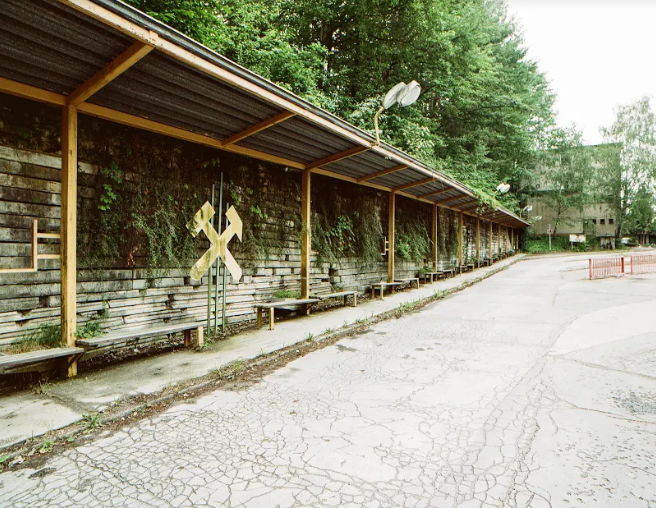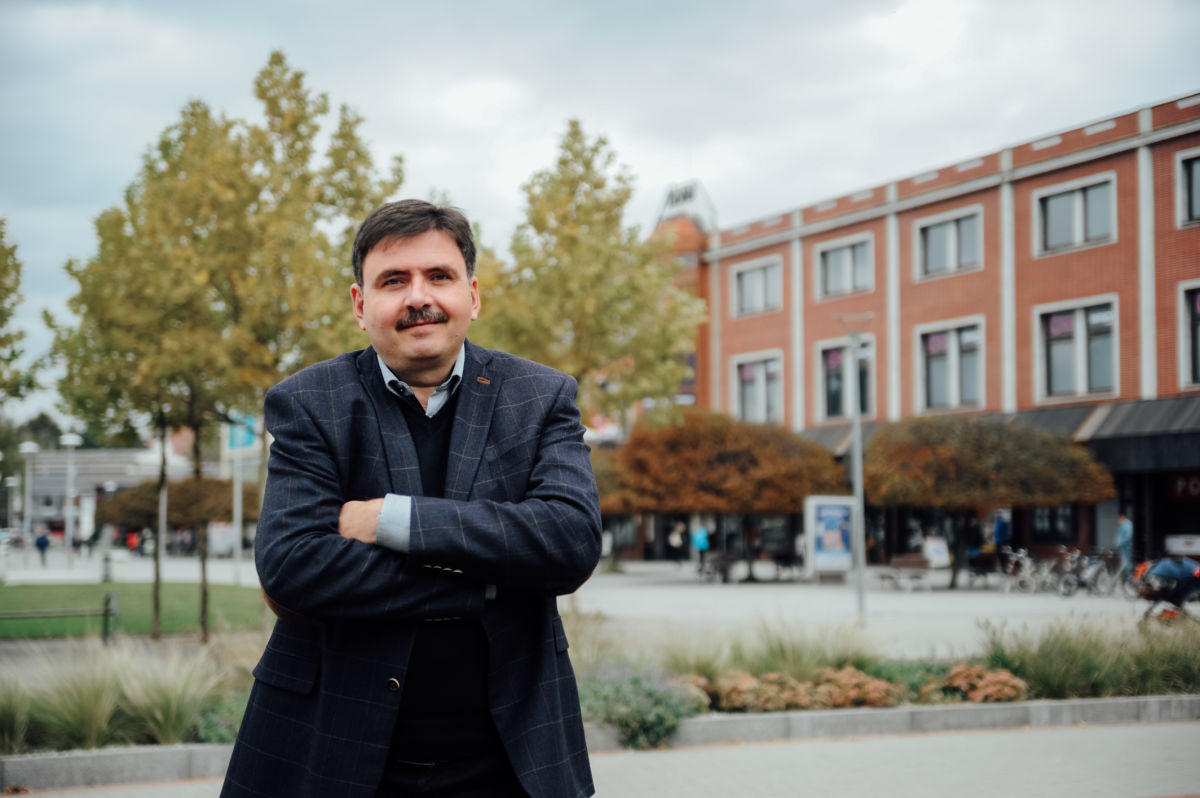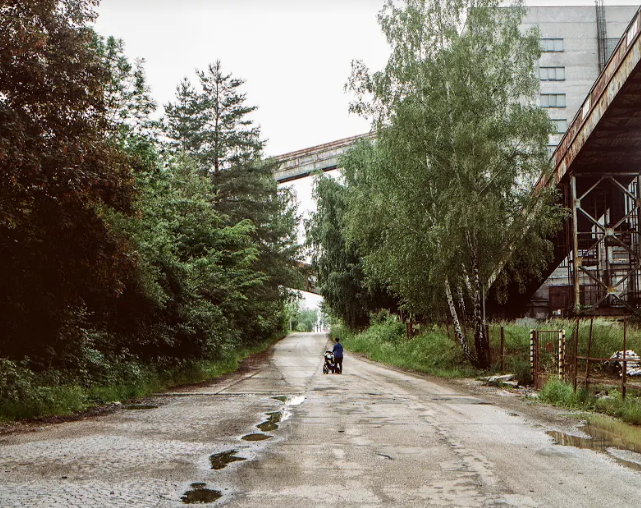
Mayors in Upper Nitra warn that a coal phaseout in the region is inevitable and are already preparing alternatives.
If ever travellers reach Prievidza, the administrative centre of Upper Nitra, usually they pass through to enjoy a holiday in the nearby town of Bojnice with its spa, castle and zoo. Prievidza’s tiny main square, srange mix of modern and socialist architecture and unreliable bus connections mean that, at first glance, the town does not seem to have much to offer visitors.
However, local people are proud of their town and its history, especially the hundreds of years of coal mining. Everyone has a grandparent, uncle or friend connected to one of the mines in the region. The nostalgia for the golden era is ever present, especially among the middle-aged and elderly. During communism, being a miner not only meant getting paid up to five times more than the average worker, it also provided various benefits and a prestigious social status.
Sentiment, however, is not of much help when it comes to discussing the future.
“Talking about a coal phaseout is difficult here, because the people who would be affected still perceive mining as some form of security. It is hard for them understand that this guarantee will be gone one day,” said Katarína Macháčková, the mayor of Prievidza.
In contrast to communist times, when the brown coal mines of Upper Nitra were state-owned and offered the possibility of lifelong employment, nowadays the mines belong to a private owner. The mining company Hornonitrianske bane Prievidza (HBP) employs 3 260 people, of which approximately 2 000 are miners working underground, according to the company’s 2017 financial report. The largest portion are from the district of Prievidza, which according to the Slovak statistical office has 135 000 residents.
The mines contain lignite, a brown coal of low quality, which the nearby obsolete power plant Nováky is bound to purchase. Because of the high price of coal, the power plant works at a loss each year, so the government has subsidised the mine with roughly EUR 100 million annually, justifying the handout as in the general economic interest of the country.
The Slovak government committed to subsidising the mine until 2030 to maintain the jobs of the miners and contribute to energy supplies. However, when the minister of economy mentioned last year that subsidies might end sooner, the regionʼs inhabitants started to worry about their livelihoods – now nobody is sure when the financial assistance will end.

‘Letʼs mine out of insecurity’
Under this headline, Macháčková and her team launched a series of public debates and workshops, with the goal of creating an action plan for the municipality once the coal era is over.
Macháčková and her team invited the Prime Minister, representatives of the European Commission, mayors, local entrepreneurs, environmental activists and various experts to take part in the broad participative discussion about the future of Prievidza.
Although no representatives of the central government or the mining company accepted the invitation, 50 local stakeholders took part in the process. Eventually, the Association of Towns and Municipalities of Upper Nitra also got engaged, which meant that under discussion now was the entire region’s post-coal development.
“We created four working groups on economy, transportation, tourism, and social infrastructure, including education, healthcare, and social services at the local level,” said Alojz Vlčko, who heads the mayorʼs office in Prievidza. “We asked ourselves ‘what resources we have in the region, what could we have here, and what barriers do we have to overcome?’ Based on these questions, we determined strategic priorities in individual areas.”
The preparation of the action plan, however, is complicated by the fact that the state has not yet specified when and how the lignite mining in Upper Nitra will decline.
“Sooner or later, the mining activity will gradually terminate. If we prepare for the transformation, we will be able to handle it,” said Macháčková, who now faces public criticism and a smear campaign for her initiative.
Unsurprisingly, the closure of the mines is most strongly opposed by its employees, even though it is their health that mining endangers most. With or without plans, they worry about the future.
According to HBP, there are 11 000 employees linked to mining in the region, while the European Commission estimates this figure to be 7 000.
“Certainly, it is necessary to create conditions so that these people do not stay unemployed,” says Macháčková. She sees solutions in multiple areas. “The improvement of transportation is a priority for us. Even if it itself does not solve the employment problem, improving the accessibility of our region will help create conditions for the emergence of new jobs.”
After retraining, the former miners could get jobs from new investors or the municipality itself. “We have filed a project idea to set up a municipal service company that would repair and renovate roads for the entire district,” explains Macháčková.
The gradual creation of new jobs, whether in the industrial zone, the nearby spa or directly with the local government, should follow the gradual decline in mining, argues the mayor.
According to data from the Slovak statistical office, unemployment is currently 4.6 per cent in the Prievidza district, which is less than the national average of 5.4 per cent and the European average of 8.1 per cent. The market actually lacks skilled labour while people are kept employed in loss-making mines.
“At present, we have the lowest unemployment rate since 1990, and that is why it is a good time to address the situation in the region. If we were in crisis, it would be much more complicated,” says Macháčková.
The action plan created for Upper Nitra on Macháčková’s initiative has become part of a national strategy for the Upper Nitra region coordinated by the Deputy Prime Ministerʼs Office for Investments and Informatisation.
Upper Nitra has also been chosen as one of four pilot areas for the EU’s programme supporting the transition of European coal mining regions, announced by Energy Commissioner Maroš Šefčovič at the end of 2017.
The first draft of the National Strategy for Upper Nitra is to be published in mid-October 2018 and open for comments from the public and experts from the European Commission, and local governments are eager for it.
“The question of whether to continue using lignite extracted in Upper Nitra for electricity is very complex and it is not within our scope to suggest any alternatives,” says Alojz Vlčko. “With no information about when and how the government wants to phase out mining, we can only philosophise about the future potential of the region,” he adds.
Coal and shoes
Jozef Božik, the mayor of Partizánske, a town 30 kilometres from Prievidza, knows a great deal about how a region can suffer if the transformation is not prepared.

Partizánske was once called Baťovany – after Tomáš Baťa, the founder of the famous shoe company. After communists took power in Czechoslovakia and nationalised the Baťa enterprise, both the town and the factory were renamed. At the time, the “Závody 29. Augusta” enterprise (ZDA) was one of the biggest players in the European shoe-making industry.
“At the time of its greatest glory, 32 million pairs of shoes were produced each year and about 11 000 people worked for the company, which was the main employer in the region,” explains Božik.
Basically everything in Partizánske and its surroundings used to depend on the shoemaking industry. The fall of communism in 1989, however, caught the factory unprepared. Overstaffed and with high labour costs, it was unable to compete with cheap footwear from Asia or adapt to the free market, collapsing at the beginning of 2000.
Božik, who has been active in regional politics since 1994 as a member of the Municipal Council of Partizánske at the age of 18, has vivid memories of this period, “In 2000 and 2001, the unemployment rates in Partizánske rose to highest levels ever. Every fifth adult in the district was without work.”
Today, only the empty factory next to the railway station and a big shoe made of flowers in the city centre commemorate the shoe industry’s golden age. Several smaller shoemaking companies still operate in the region.Similarly to Prievidza, unemployment rates in Partizánske today are lower than the European average, and the labour market lacks skilled labour. Božik hopes that the lessons learned from the decline of the shoemaking industry will help the community better prepare for the coal phaseout. Like the mayor of Prievidza, Božik too is an advocate of early planning.

Burning the unburnable
In both Partizánske and Prievidza regions, people suffer because of mining and the burning of low quality brown coal in the Nováky plant. The consequences of air pollution include higher incidences of premature deaths, oncological diseases and asthma.
The owner of the Nováky power plant – Slovenské elektrárne – acknowledges that it will need major investments to be able to operate after 2023, when new European pollution standards come into play. “The durability of some crucial parts of the power plant Nováky is coming close to the end,” spokesperson Miroslav Šarišský told vEnergetike.sk. “Without tens of millions euros in investments it won’t be able to operate in a safe manner, fulfilling all the technical and environmental requirements.”
The outdated power plant technology was on full display two years ago, when the decommissioned third boiler was started again to increase the volume of incinerated coal. According to the law, operational experiments could happen and had only to be announced to the local authorities i.e. no government authority approved or reviewed such decisions.
The Mayor of Partizánske was the one to start a fight against this practice. “My duty is to protect the citizens of the town and the region,” says Božik, who is also a Vice-Chairman of the Self-Governing Region of Trenčín, which includes both towns of Prievidza and Partizánske. He called on all regional stakeholders to take action.
“We asked the competent authorities to carry out an audit of the sulfur dioxide released into the air. The Ministry of the Environment confirmed that during the four months of the operational experiments, the emission limits were exceeded by ten times.”
After pressure from local governments, an important legislative change forbid operational experiments.
The quality of the extracted coal is best illustrated by a local joke: “A wagon filled with lignite was delivered to the Nováky plant. It started to burn. The container burnt to dust and the lignite lasted.”
Although burning coal has been considered the largest anthropogenic contributor to climate change, the Slovak state pays an annual EUR 100 million subsidy to the Nováky plant. The subsidy is paid by all citizens of Slovakia in the form of energy charges, but only the private owner of the mines profits.
According to 2014 data from the European Commission, Slovak households pay the largest portion of their income of all EU countries for energy. For families living on the poverty line, this may mean that every fifth euro they earn must be spent to pay for electricity.
“I appreciate the work of miners and I acknowledge the mining history of Upper Nitra,” says Božik. “But mining has a grim future in Slovakia.”
He thinks that state subsidies should be used to support the retraining of miners and the development of the region, adding that Slovakia could phase out coal by 2023.
“Within five years, it is possible to create a social security mechanism for all the employees who would not be employed on the labour market after the closure of mines,” he says, adding that this will require political will.
Citizens will decide whether mayors like Katarína Macháčková and Jozef Božik will be the ones to manage their towns throughout the phasing out of coal. Municipal elections are scheduled for November 2018.
Text: Zuzana Limova
Photos: Zuzana Limova and Michal Burza (for Greenpeace)
